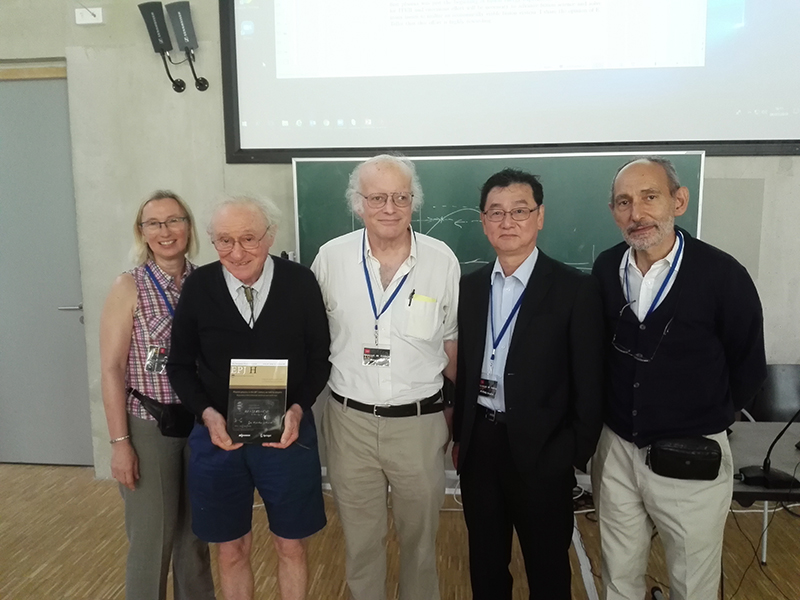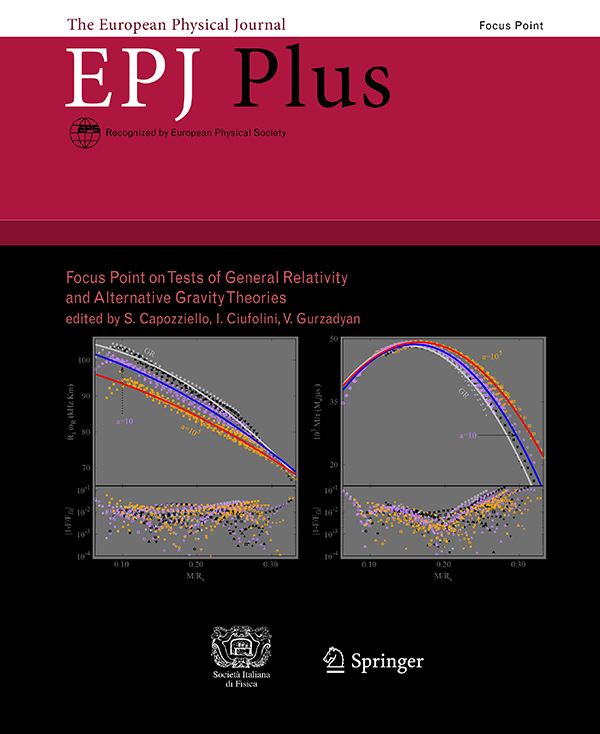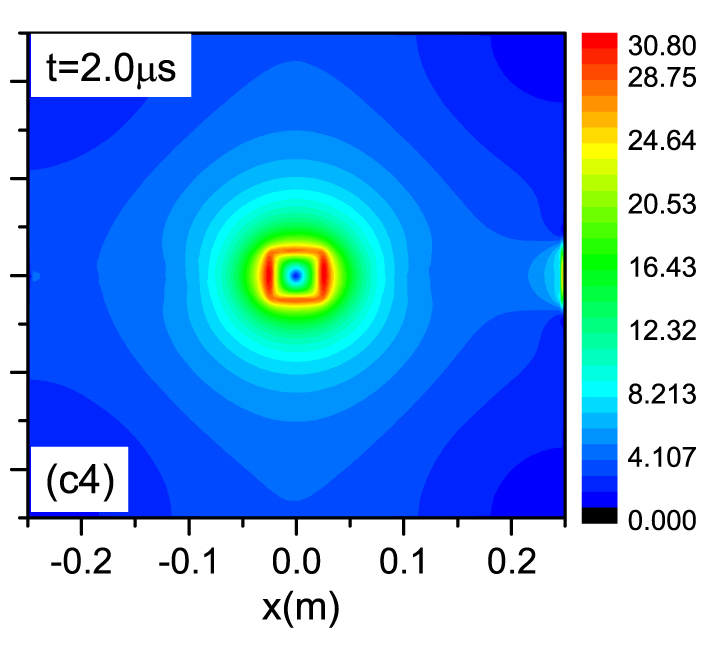News
EPJ E Highlight - Improving heat recycling with the thermodiffusion effect
- Details
- Published on 15 July 2019

Numerical simulations of the thermodiffusion effect within falling film absorbers reveal that thin films composed of liquid mixtures with negative thermodiffusion coefficients enhance the efficiency of heat recycling
Absorption heat transformers can effectively reuse the waste heat generated in various industries. In these devices, specialised liquids form thin films as they flow downward due to gravity. These liquid films can absorb vapour, and the heat is then extracted by a coolant so that it can be used in future processes. So far, however, there has been little research into how the performance of these films is influenced by the thermodiffusion effect – a behaviour seen in mixtures, where different types of mixture respond differently to the same temperature gradient. In a study recently published in EPJ E, researchers from the Fluid Mechanics group at Mondragon University and Tecnalia in Spain, led by M. M. Bou-Ali at Mondragon University, pooled their expertise in transport phenomena and absorption technology. Together, they explored for the first time the influence of the thermodiffusion property on the absorption, temperature and concentration profiles of falling films.
EPJ E Colloquium - European Space Agency experiments on thermodiffusion of fluid mixtures in space
- Details
- Published on 11 July 2019

Diffusive processes are ubiquitous in daily life and in natural processes, playing a key role in the transformation and mixing of fluid mixtures, and there is considerable scientific and industrial interest in such mixing processes. One consequence of diffusion is the development of non-equilibrium fluctuations in liquid mixtures, particularly when fluids are exposed to a thermal gradient. This is easier to observe in weightlessness, as gravity dampens this phenomenon on Earth especially for large fluctuations.
Special Day to honour Uriel Frisch at Festival de Théorie, Aix-en-Provence, 8 July 2019
- Details
- Published on 10 July 2019

The Festival de Théorie is held every two years in Aix-en-Provence and aims at fostering interdisciplinary research activity in the field of magnetised plasmas – including controlled fusion, space and astrophysics, with connections to fluid mechanics and geophysics, among others. Monday, 8 July 2019 was a special day devoted to honour Uriel Frisch who has recently edited a special issue on “Plasma physics in the 20th century as told by players” together with Pat Diamond and Yves Pomeau published in EPJH (link). The morning session started with an introduction by Pat Diamond, followed by lectures from Yves Pomeau, Roald Sagdeev, who had been interviewed for the special issue, and Sergey Nazarenko. The afternoon session was introduced by Sabine Lehr, in charge of the publication of the special issue at SpringerNature. It was followed by lectures from Fritz Wagner and Mitsuru Kikuchi, who had both contributed to the special issue, as well as from Jean Jacquinot who addressed aspects of Guy Laval’s contribution to this same issue. Afterwards there was a lively discussion.
Click here to access and read the special issue freely until the end of July 2019.
EPJ Data Science Highlight - What ‘Twitch Plays Pokémon’ tells us about crowd behavior
- Details
- Published on 05 July 2019

No one would deny that the behavior of the people we know, and even of our own, can radically change depending on those who surround us. The problem of understanding how being in a group changes the way we behave has been subject of intense research in psychology since the beginning of the past century. The beginning of the XXI century gave rise to a new kind of group: the online crowds. Nowadays, it is no longer necessary to have all individuals in the same place in order to have a ‘crowd’. What is more, it is possible to connect together thousands, even millions, of individuals in a matter of minutes.
In the work recently published in EPJ Data Science, we study one such occasion that gathered millions of users: Twitch Plays Pokémon.
Continue reading the guest post by Alberto Aleta on the SpringerOpen blog.
EPJ Plus Highlight - Improving the signal-to-noise ratio in quantum chromodynamics simulations
- Details
- Published on 05 July 2019

A new Monte Carlo based simulation method enables more precise simulation for ensembles of elementary particles
Over the last few decades, the exponential increase in computer power and accompanying increase in the quality of algorithms has enabled theoretical and particle physicists to perform more complex and precise simulations of fundamental particles and their interactions. If you increase the number of lattice points in a simulation, it becomes harder to tell the difference between the observed result of the simulation and the surrounding noise. A new study by Marco Ce, a physicist based at the Helmholtz-Institut Mainz in Germany and recently published in EPJ Plus, describes a technique for simulating particle ensembles that are 'large' (at least by the standards of particle physics). This improves the signal-to-noise ratio and thus the precision of the simulation; crucially, it also can be used to model ensembles of baryons: a category of elementary particles that includes the protons and neutrons that make up atomic nuclei.
EPJ Plus Focus Point: Tests of General Relativity and Alternative Gravity Theories
- Details
- Published on 04 July 2019

Testing of fundamental physical theories at ever higher accuracy is a continuous process and hence General Relativity and the development of alternative gravity theories have always been among the interests of experimentalists, astronomers and theoreticians. The empirical basis of General Relativity is linked to an immense scope of areas, from the equivalence principle up to the variation of the gravitational constant and of other physical constants.
A new phase of studies on extensions of General Relativity and alternative gravity theories started with the discovery of the dark sector - the dark energy and dark matter - as of dominating content of the Universe.
The papers included in this Focus Point although cover a minor fraction of the above mentioned areas, nevertheless they contain timely accounts on broad topics, from tests on equivalence principle, to orbital dynamics of extended bodies in inspiraling binary systems, up to cosmology.
EPJ B Highlight - Spread-changing orders and deletions affect stock prices
- Details
- Published on 02 July 2019

A new analysis of the bid-ask spread of stock prices reveals that placements and deletions of trade orders can affect stock prices as much as trades themselves
The first rule on the stock market is to buy low and sell high. Economists are well aware of how this behaviour changes the prices of stocks, but in reality, trades alone don’t tell the whole story. Parties like banks and insurance companies rarely trade stocks themselves; instead, they place orders for traders to do so on their behalf, which can be canceled at any time if they are no longer interested. The amount payed by those placing orders is affected by a highly variable quantity called the bid-ask ‘spread’ – the difference between the price initially quoted for a stock, and the final bidding price. In a new study published in EPJ B, Stephan Grimm and Thomas Guhr from Duisburg-Essen University in Germany compare the influences that three price-changing events have on these spread changes. Their work sheds new light on the intricate inner workings of the stock market.
EPJ D Highlight - Simulations fix the cracks in magnetic mirrors
- Details
- Published on 01 July 2019

Computer simulations reveal that magnetic mirrors can be tweaked to confine plasma more effectively, by fine-tuning both the arrangements of their electromagnets, and the initial properties of the plasma itself
When ring-shaped electromagnets are set up in linear arrangements, they can produce magnetic fields resembling a tube with a cone at each end; a structure which repels charged particles entering one cone back along their path of approach. Referred to as ‘magnetic mirrors’, these devices have been known to be a relatively easy way to confine plasma since the 1950s, but they have also proven to be inherently leaky. In a study published in EPJ D, physicists led by Wen-Shan Duan at Northwest Normal University, and Lei Yang at the Chinese Academy of Sciences, both in Lanzhou, China, show that these plasma leaks can be minimised if specific conditions are met. Using computer simulations, the physicists analysed the dynamic properties of a high-energy proton plasma beam within a magnetic mirror and fine-tuned the simulation settings to maximise its confinement.
EPJE Topical Review: Lattice Boltzmann methods and active fluids
- Details
- Published on 28 June 2019
Active fluids are living matter or biologically inspired systems, consisting of self-propelled units that burn stored or ambient energy and turn it into work, eventually giving rise to systematic movement. In a new Topical Review paper published in EPJE, authors from groups in Bari (University of Bari, INFN, and the Istituto Applicazioni Calcolo, CNR) and the Center for Life Nano Science, La Sapienza, Rome describe the use of Lattice Boltzmann Methods (LBM) in the study of large scale properties of active fluids.
EPJ B Review Article - Micromagnetics and Spintronics: Models and Numerical Methods
- Details
- Published on 12 June 2019

Computational micromagnetics has become an indispensable tool for the theoretical investigation of magnetic structures. Classical micromagnetics has been successfully applied to a wide range of applications including magnetic storage media, magnetic sensors, permanent magnets and more. The recent development of spintronics devices has led to various extensions to the micromagnetic model in order to account for spin-transport effects. Now, Claas Abert of the University of Vienna has prepared a comprehensive Review Article on the subject for EPJ B, aiming to provide an overview of the analytical micromagnetic model as well as its numerical implementation. The main focus is put on the integration of spin-transport effects with classical micromagnetics.




